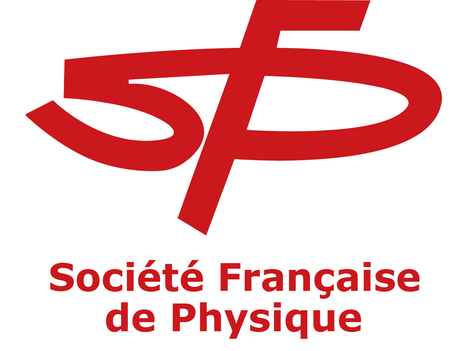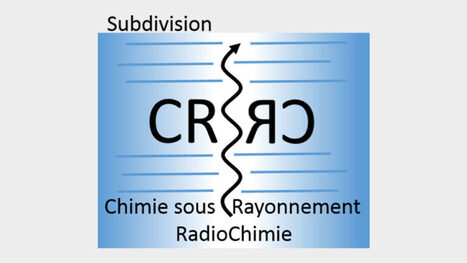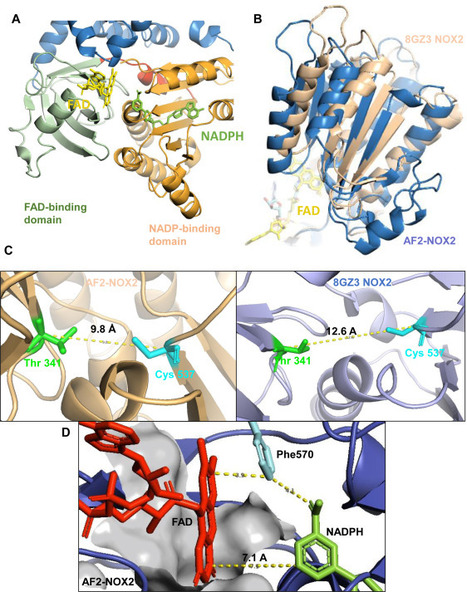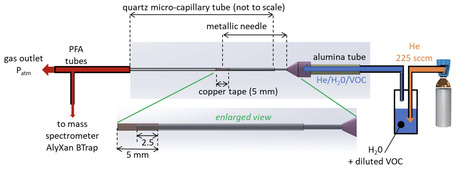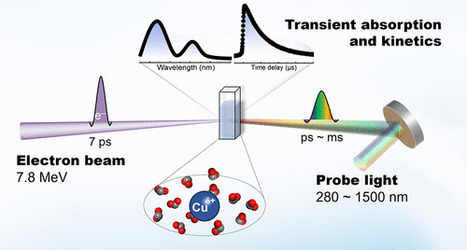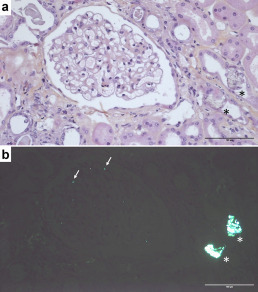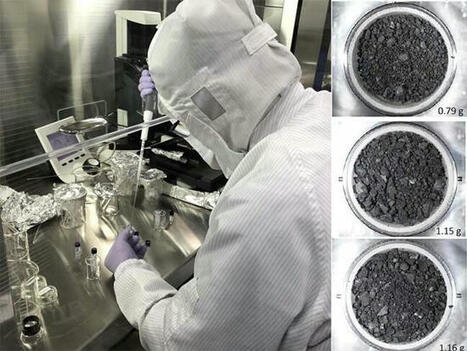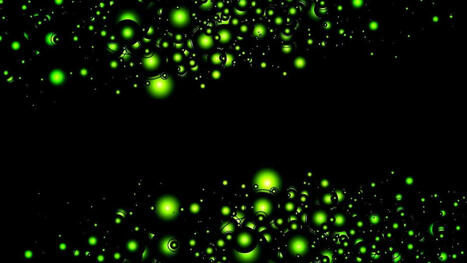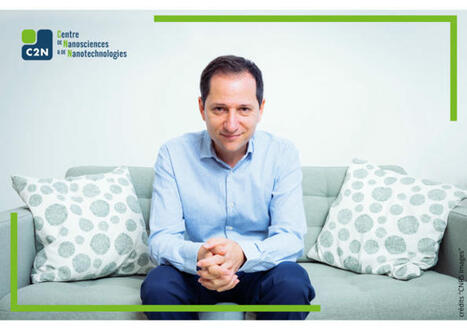 Your new post is loading...

|
Scooped by
Institut de Chimie Physique
April 11, 1:57 AM
|
Le "Colloque Jacques Haïssinski" sera organisé tous les deux ans dans et sera consacré à des thèmes liés aux accélérateurs de particules, sujet où Jacques Haïssinski avait été un pionnier. Il aura lieu le aura lieu le mardi 20 mai 2025 à 14h30 à l'Auditorium Pierre Lehmann d'IJCLab à Orsay. - The birth of electron positron collisions par Giulia Pancheri ( Frascati) - 50 years of colliders par Steve Myers (CERN) Inscription: https://indico.ijclab.in2p3.fr/event/11336/

|
Scooped by
Institut de Chimie Physique
April 13, 11:43 AM
|
Le 3 juin 2025, la subdivision Chimie sous Rayonnement et Radiochimie de la DCP organise la 2nde Journée "Nucléaire et Radiolyse" (JNR2025) à l'Université Paris-Saclay, Bâtiment 670, Amphithéâtre Hervé Daniel 6 Conférences grand public avec 4 thèmes Santé, énergie, histoire, patrimoine. Modalités d'inscription à venir.

|
Scooped by
Institut de Chimie Physique
April 10, 10:26 AM
|
L'objectif principal du dispositif SESAME est de faire du territoire francilien une référence mondiale en matière de science et de technologie en donnant aux laboratoires les moyens nécessaires pour développer de nouveaux projets et pour mettre en œuvre des dispositifs expérimentaux originaux de recherche. Dépôt des demandes ouvert jusqu'au 03 juin 2025. Prochaine session à partir du 01 mars 2026

|
Scooped by
Institut de Chimie Physique
April 10, 11:24 AM
|
The next edition of the GGMM Congress will take place in the city of Forge-Les-Eaux, in the Normandie region of France, from June 10 to June 12, 2025. Early-Bird Fees from January 16th to May 15th. The congress will feature five thematic sessions with five keynote speakers: Jessica Andréani (Structural Bioinformatics and AI), Max Bonomi (Integrative Modeling), Aurélien de la Lande (Multi-Scale Simulations), Barbora Kozlíková (Graphism and Visualization), and Giorgia Brancolini (Interface Modeling).

|
Scooped by
Institut de Chimie Physique
April 10, 11:33 AM
|
The 2nd Summer School on Advancing Scientific Discovery with AI is a comprehensive program designed to explore the intersection of artificial intelligence (AI) and scientific research. Registration DEADLINES is 20 APRIL 2025.

|
Scooped by
Institut de Chimie Physique
April 10, 10:37 AM
|

|
Scooped by
Institut de Chimie Physique
April 10, 10:46 AM
|
La journée scientifique de la Division Transversale Energie de la Société Chimique Française aura lieu le 25 avril 2025 à CPE LYON sur le campus de l'Université Claude Bernard - Lyon 1

|
Scooped by
Institut de Chimie Physique
April 10, 11:12 AM
|
Prix de stage (licence, master ou école d'ingénieur). Critères d'éligibilité : (i) Stage (> à 4 semaines) réalisé en 2024 dans un laboratoire ou une entreprise en Île de France. (ii) Être adhérent(e) à la SCF au moment de la candidature. Clôture des candidatures le 29 avril 2025.

|
Scooped by
Institut de Chimie Physique
March 26, 11:00 AM
|
Les Rencontres de Chimie Physique de la Division de Chimie Physique SCF/SFP auront lieu du 15 au 17 septembre 2025 à Aussois. Ces journées auront pour but de rassembler la communauté des physico-chimistes et de favoriser les échanges scientifiques au sein des thématiques de la DCP et des subdivisions. Conférenciers - Marc Baaden, Conférence Jean Perrin
- Christian George, Prix Chercheur Confirmé 2024
- Victor Gonzalez, Prix Jeune Chercheur 2024
- Joana Vaz Ramos, Prix de thèse 2024
- Louis Godeffroy, Prix de thèse 2024
- Valérie Vallet, invitée
- Diane Rebiscoul, invitée
Programme et inscription

|
Scooped by
Institut de Chimie Physique
April 10, 10:59 AM
|
Unique en France, le Congrès Général de la Société Française de Physique offre, tous les deux ans, un panorama actualisé et multidisciplinaire des dernières avancées en physique, tous domaines confondus. On peut citer le mini-colloque "Dynamique femtoseconde : pour comprendre et contrôler les processus moléculaires" (MC12). Date de clôture de l'appel à contributions : 16 avril 2025 Fermeture des inscriptions à tarif préférentiel : 4 juin 2025
Date de clôture des inscriptions en ligne : 28 juin 2025

|
Scooped by
Institut de Chimie Physique
March 26, 9:50 AM
|

|
Scooped by
Institut de Chimie Physique
November 12, 2024 4:17 PM
|
Nicolas Solem, Claire Romanzin, Roland Thissen, Christian Alcaraz, Quentin Autret et leurs collaborateurs ont publié récemment un article dans The Journal of Physical Chemistry Letters: Experimental Characterization of the Isomer-Selective Generation of the Astrochemically Relevant Hydroxymethylene Radical Cation (HCOH•+/DCOH•+) Lien vers la publication Interest in the observation and characterization of organic isomers in astronomical environments has grown rapidly with an increase in the sensitivity of detection techniques. Accurate modeling and interpretation of these environments require experimental isomer-specific reactivity and spectroscopic measurements. Given the abundance of formaldehyde (H2CO) in various astrophysical objects, the properties and reactivities of its cation isomers H2CO•+ and HCOH•+ are of significant interest. However, for the hydroxymethylene radical cation HCOH•+ (and its isotopologue DCOH•+), detailed reactivity studies have been limited by the lack of suitable experimental methods to generate this isomer with high purity. Here, potential approaches to the isomer-selective generation of HCOH•+ and DCOH•+ are characterized through differential reactivity measurements. While the dissociative photoionization of cyclopropanol (c-CH2CH2CHOH) is determined to be unsuitable, the dissociation of methanol-d3 (CD3OH) allows for the formation of DCOH•+ with a fractional abundance of >99% at photon energies below 14.8 eV. These results will allow future spectroscopic and reactivity measurements of HCOH•+/DCOH•+ to be conducted, laying the groundwork for future detection and incorporation into models of the interstellar medium.

|
Scooped by
Institut de Chimie Physique
November 12, 2024 3:51 PM
|
Sana Aimeur, Xavier Serfaty, Tania Bizouarn, Laura Baciou et leurs collaborateurs ont publié récemment un article dans Journal of Biological Chemistry: "Structural profiles of the full phagocyte NADPH oxidase unveiled by combining computational biology and experimental knowledge" Lien vers la publication The phagocyte NADPH oxidase (NOX2) is an enzyme, crucial for innate immune defense, producing reactive oxygen species necessary for pathogen destruction. Its activation requires the assembly of soluble proteins (p47phox, p40phox, p67phox, and Rac) with the membrane-bound flavocytochrome b558 (cytb558). We combined circular-dichroism analyses, with decades of experimental data, to filter structural models of the NADPH oxidase complex generated by the artificial intelligence program AlphaFold2 (AF2). The predicted patterns tend to closely resemble the active states of the proteins, as shown by the compact structure of the cytb558, whose dehydrogenase domain is stabilized closer to the membrane. The modeling of the interaction of p47phox with cytb558, which is the initial assembly and activation steps of the NADPH oxidase, enables us to describe how the C-terminus of p47phox interacts with the cytb558. Combining the AF2 cytb558 -p47phox model and its classical molecular dynamics simulations, we highlighted new hydrophobic lipid insertions of p47phox, particularly at residues Trp80-Phe81 of its PX domain. The AF2 models also revealed the implications of intrinsically disordered regions, such as the fragment between the PX domain and the SH3 regions of p47phox, in ensuring distant protein-protein and membrane-protein interactions. Finally, the AF2 prediction of the cytb558-Trimera model highlighted the importance of leaving Rac1 as a separate protein to reach an active state of the NADPH oxidase complex. Altogether, our step-by-step approach provides a structural model of the active complex showing how disordered regions and specific lipid and protein interactions can enable and stabilize the multi-subunit assembly.

|
Scooped by
Institut de Chimie Physique
November 12, 2024 4:10 PM
|
Michel Heninger, Joël Lemaire, Antoine Pallandre et leurs collaborateurs ont publié récemment un article dans Journal of Physics D: Applied Physics: VOCs conversion in He/H2O plasma produced in a micro-capillary tube at atmospheric pressure Lien vers la publication A non-equilibrium plasma is created in a micro-capillary quartz tube (800 µm of internal diameter), by a DC-pulsed micro-dielectric barrier discharge (micro-DBD) and the propagation of an ionisation wave, in mixtures of He/H2O/VOC at atmospheric pressure where the studied volatile organic compounds (VOCs) are representative of molecules belonging to different chemical families: alcohols (methanol, ethanol, isopropanol, tert-butanol), ketones (acetone), nitriles (acetonitrile), and aromatic hydrocarbons (toluene). The conversion efficiency of these VOCs is studied as a function of the applied voltage on the micro-DBD (or electrical energy deposited in the plasma) and of the initial concentration of the molecules in the range from 1 ppm up to 3000 ppm (depending on the molecule), with the help of high-resolution real-time mass spectrometry Fourier transform ion cyclotron resonance associated to chemical ionisation (CI-FTICR) using H3O+ as precursor ion. A variety of by-products resulting from the conversion of VOCs are identified and quantified, emphasising that the micro-capillary plasma is able to induce a complex chemical reactivity. A qualitative analysis of the involved kinetics, based on the existing literature, reveals that helium species (ions and metastable states) and radicals coming from the dissociation of the water molecules (O and OH) are the most probable candidates to explain the formation of all compounds detected by the CI-FTICR apparatus. Quenching processes of the metastable He(23S) by the VOCs, leading to the dissociation of the molecules, are suggested to explain some of the experimental results.

|
Scooped by
Institut de Chimie Physique
November 12, 2024 3:42 PM
|
Zhiwen Jiang, Carine Clavaguéra, Sergey A. Denisov, Jun Ma et Mehran Mostafavi viennent de publier un article dans Journal of the American Society: Role of Oxide-Derived Cu on the Initial Elementary Reaction Intermediate During Catalytic CO2 Reduction Lien vers l'article The catalytic role of oxide-derived Cu (OD-Cu) in promoting CO2 reduction (CO2R) to C2+ products has been appreciated for decades. However, the dynamic evolution of the surface oxidation states, together with their real correlation to the binding of reaction intermediates, remains unclear due to technical challenges. Here, we show the time-resolved spectroscopic signatures of key OD-Cu-CO2•– intermediates during catalytic CO2 reduction through one electron transfer from nanoseconds to seconds time scale. We generated the initial intermediate CO2•– radicals in the bulk solution and monitored the interfacial reaction kinetics with well-defined OD-Cu (Cu(0), Cu(I), and Cu(II)) nanoparticles. Combined with molecular simulations, transient absorption profiles analysis reveals that Cu(I) induced a faster CO2•– radical coupling reaction than Cu(0), whereas Cu(II) is only reduced to Cu(I) by the CO2•– radical. Furthermore, the newly developed multistep cumulative pulse methodology uncovered the transition in chemical states of mixed OD-Cu during radical coupling reactions. This pulse radiolysis study provides compelling evidence for the beneficial role of subsurface oxides in early time catalytic CO2 transformation.

|
Scooped by
Institut de Chimie Physique
November 12, 2024 4:13 PM
|
Dominique Bazin et ses collaborateurs ont publié récemment un article dans Nephrology Image: "Unveiling glomerular gold in oxalate nephropathy" Lien vers la publication An 82-year-old woman was admitted with acute kidney injury. Her medical history included type 2 diabetes, hypertension, ischemic stroke, rheumatoid arthritis, esophageal adenocarcinoma, and, recently, septic arthritis of the foot. Serum creatinine, previously normal, increased rapidly to 2.3 mg/dl and peaked at 3.8 mg/dl. Urinalysis, proteinuria, and kidney ultrasonography were normal. The kidney biopsy revealed lesions of acute tubular necrosis and crystalline deposits in the tubular lumens, birefringent in polarized light (Figure 1a and b). Unusual, small (1–3 μm), polarizing deposits were also observed in glomeruli (Figure 1b, arrows).

|
Scooped by
Institut de Chimie Physique
November 12, 2024 3:39 PM
|
Roland Thissen a contribué à l'article "Astrochimie, dans les cuisines cosmiques" dans CNRS Le Journal. Étudier la chimie du milieu interstellaire et récolter des indices sur l’origine de la vie sur Terre. Tel est l’objectif de l’astrochimie, une « jeune » science qui connaît depuis quelques années de formidables progrès. https://lejournal.cnrs.fr/articles/astrochimie-dans-les-cuisines-cosmiques

|
Scooped by
Institut de Chimie Physique
November 11, 2024 5:02 PM
|
"Enerzine" parle des travaux de Nawfal Ghazzal et ses collaborateurs ! Les énergies renouvelables connaissent un essor considérable, et la recherche s’intensifie pour développer des solutions durables. Une équipe de chercheurs français vient de réaliser une avancée significative dans le domaine de la production d’hydrogène vert, ouvrant la voie à de nouvelles perspectives énergétiques. Des scientifiques de l’Institut de chimie physique (CNRS/Université Paris-Saclay) ont mis au point un système photocatalytique sans métaux nobles, s’inspirant du processus de photosynthèse des plantes. Le dispositif se révèle capable de transformer efficacement les protons de l’eau en dihydrogène, marquant ainsi une étape importante vers la production de carburants verts.
Lire la suite...

|
Scooped by
Institut de Chimie Physique
November 12, 2024 4:42 PM
|
Abderrahmane Tadjeddine participera à la 24 ème réunion annuelle de Annual Meeting of African Science Academies (AMASA 2024) qui se tiendra à Alger du 26 au 28/11/2024. Il donnera une key-note sur "Synchrotron radiation facility, an essential characterisation tool for science, innovation and technology".
ICP agenda - Soutenances de thèse, séminaires...
- mercredi 13 novembre: séminaire du Prof. Amitava Adhikary from Oakland University (USA) "Exploring Radiation Chemistry: Implication to Radiation Biology and Radiotherapy"..14h, salle Magat.
- jeudi 14 novembre:: séminaires de Florent Ducrozet et Zhiwen Jiang, nouveaux arrivants permanents dans le groupe TEMiC. 9h-12h salle Magat.
- jeudi 14 novembre: Assemblée Générale de l'ICP. 13h salle Magat.
- vendredi 22 novembre: séminaire de Guillaume Andrieu de l’Institut Necker-Enfants Malades. « From oncogene dysregulation to targette thérapies in leukemia ». 11h salle Magat.
- lundi 25 novembre: soutenance de thèse de Isabel De Figueiredo "Détection Précoce de la Maladie de Parkinson par Intégration de la Microfluidique et Spectrométrie de Masse à Mobilité Ionique”, 14h salle Magat.
- 27 et 28 novembre: comité de visite de l'HCERES.
- mercredi 4 décembre: soutenance de thèse de Terkia Bettioui "Lipidomique du globule rouge par techniques de spectrométrie de masse et d'imagerie infrarouge : application à l'étude de la maladie de Gaucher". 14h salle audiovisuelle de l'IUT d'Orsay.

|
Scooped by
Institut de Chimie Physique
November 11, 2024 5:07 PM
|
Conférence de Julien Bobroff, physicien, professeur à l’Université Paris-Saclay. Lundi 18 novembre -10h30 - Amphithéâtre du C2N Quels sont les vrais enjeux de la vulgarisation aujourd'hui ? Pourquoi les chercheurs devraient à tout prix vulgariser eux-mêmes leurs recherches ? Et dans ce cas, quels sont les bons formats ? Voilà quelques-unes des questions qui seront abordées.

|
Scooped by
Institut de Chimie Physique
November 11, 2024 5:13 PM
|
CALL FOR PROPOSAL FOR THEMATIC PROGRAMS Institut Pascal (IPa) promotes thematic programs to bring scientific communities together and help them explore pioneering ideas and establish new collaborations. IPa welcomes programs from all the scientific fields covered by Université Paris-Saclay, be they theoretical or experimental. The spirit of the IPa initiative is to host programs of long duration (typically 2-3 weeks, up to a trimester), allowing researchers to devote the necessary time and energy to particularly challenging topics. These programs should favor brainstorming sessions that lead to innovative advancements. Application details https://www.universite-paris-saclay.fr/institut-pascal/ Deadline 9th December 2024

|
Scooped by
Institut de Chimie Physique
November 12, 2024 4:25 PM
|

|
Scooped by
Institut de Chimie Physique
November 12, 2024 4:22 PM
|
Le 17 décembre prochain, de 10h à 11h30, le réseau Infranalytics organise un webinaire autour des hauts champs magnétiques et leurs applications pour les analyses RMN, RPE et FTICR-MS haute résolution. Programme - 10h00-10h15: Présentation de l’Infrastructure de Recherche Infranalytics - Carine van Heijenoort
- 10h15-10h20: Présentation du Comité des Utilisateur·rices d’Infranalytics
- 10h20-11h20: L’apport des hauts champs magnétiques & hautes fréquences dans les sciences analytiques, pour la FTICR-MS (Carlos Afonso), la RMN (Anne Lesage) et la RPE (Giuseppe Sicoli)
L'inscription est gratuite mais obligatoire (cf lien ci-dessous) https://docs.google.com/forms/d/e/1FAIpQLSc3_bzlZPxd1MorCSYgGkZFXe7Ru_BXvkrP7RgoGkgWiTquUg/viewform

|
Scooped by
Institut de Chimie Physique
November 12, 2024 4:29 PM
|
Une conférence organisée par la section locale Paris-Sud de la Société Française de Physique. La conférence de Nathalie Palanque-Delabrouille "L'Univers sombre nous réserve-t-il de nouvelles surprises" aura lieu le jeudi 14 novembre 2024 à 16h à l'Auditorium Pierre Lehmann au bâtiment 200 du laboratoire IJCLab, sur le campus de l'Université Paris-Saclay. Elle sera également retransmise en direct via Zoom (lien fourni au moment de l'évènement). Détails et lien
|



 Your new post is loading...
Your new post is loading...

